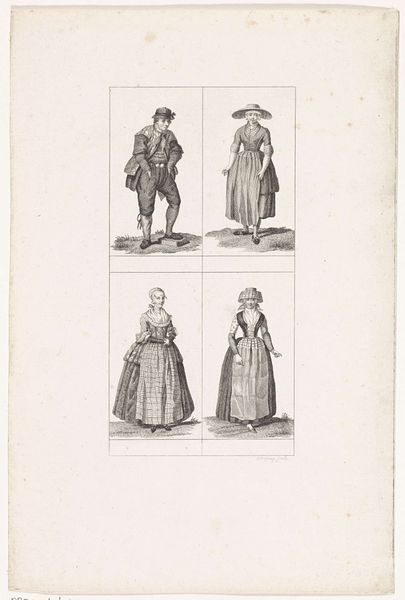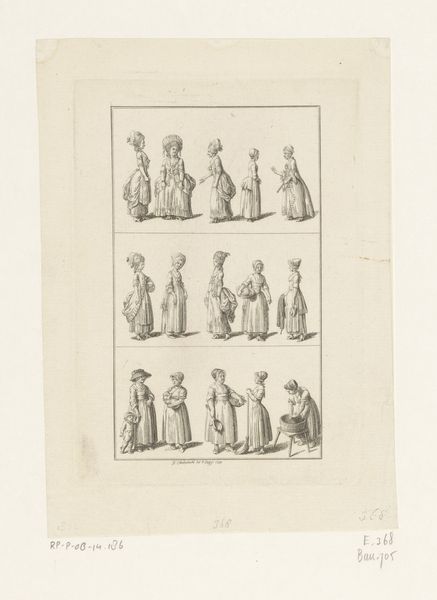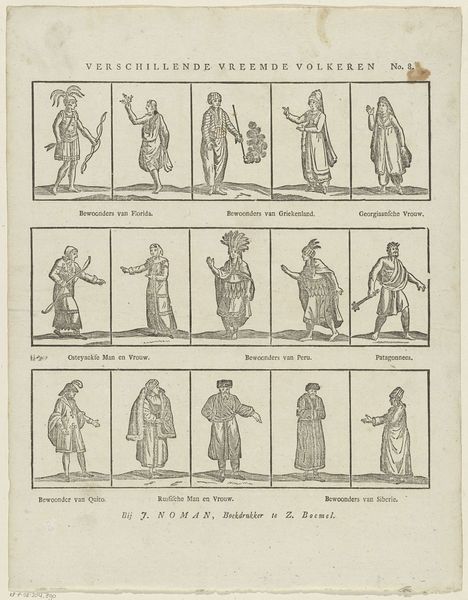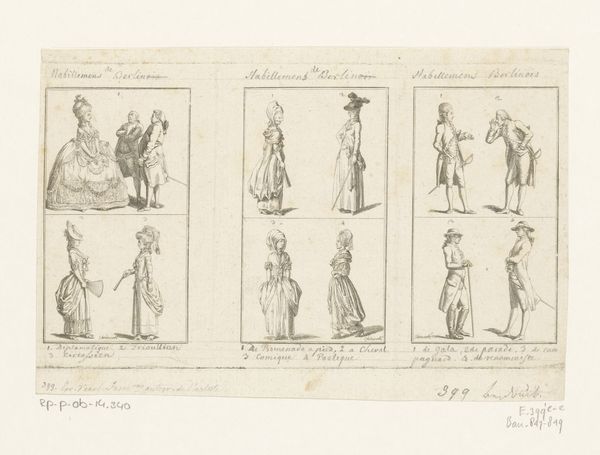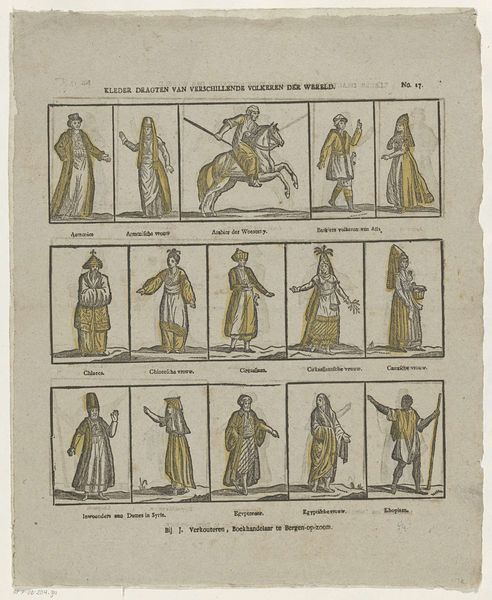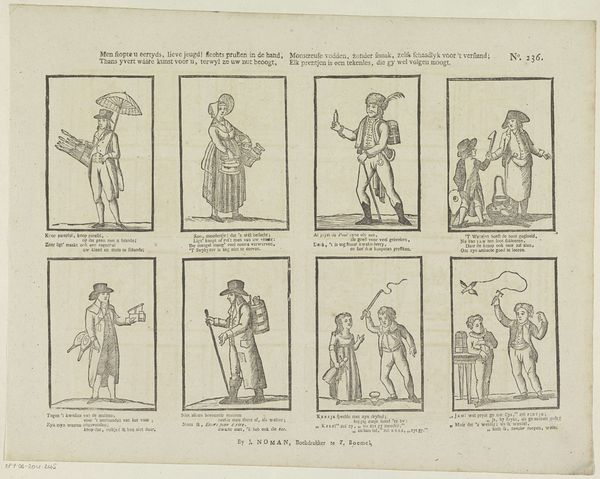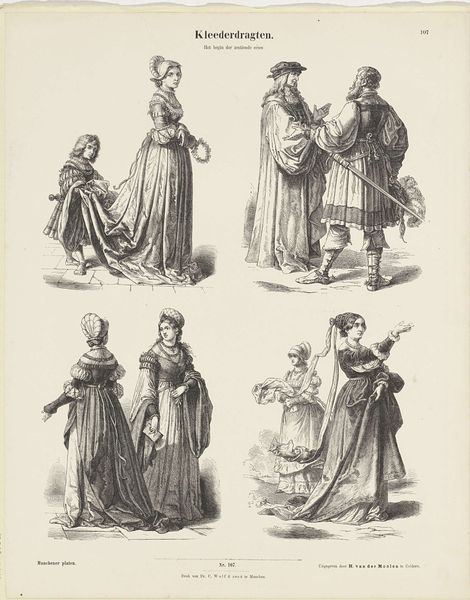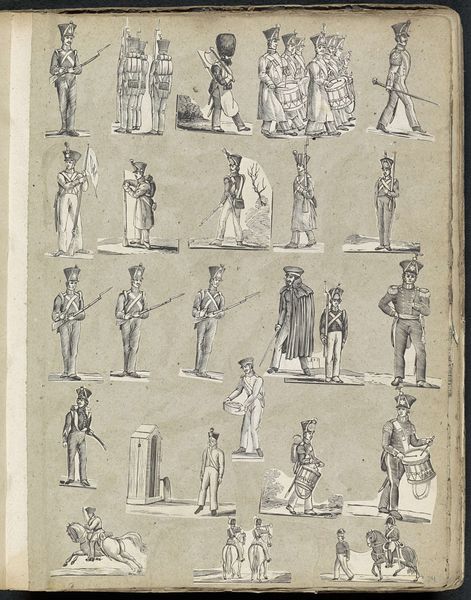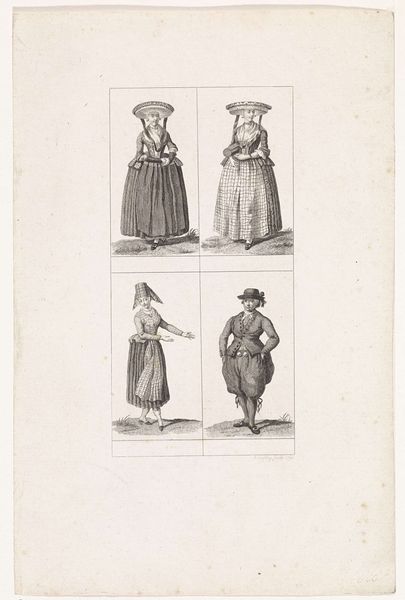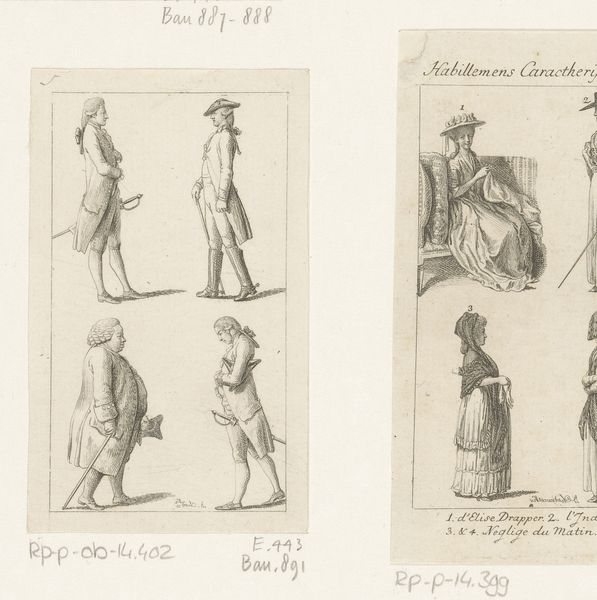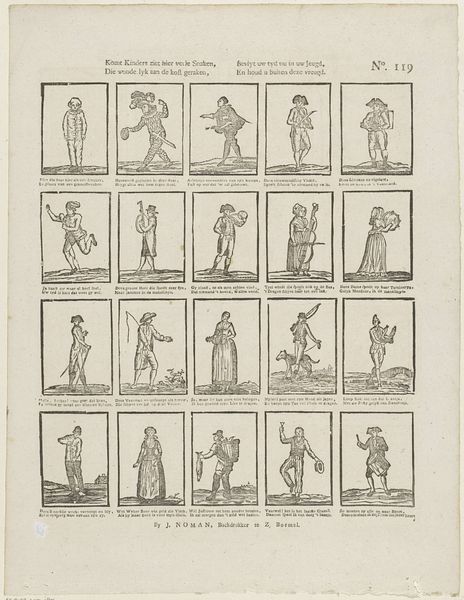
drawing, print, engraving
#
drawing
#
baroque
# print
#
fashion sketch
#
dress
#
engraving
Dimensions: height 252 mm, width 177 mm
Copyright: Rijks Museum: Open Domain
Editor: Here we have "Tailleur," an 18th-century engraving by Sellier. It's fascinating to see so many figures laid out in rows. It reminds me of a catalogue page, and the precision of line is so beautiful, even if a little rigid. What do you make of this tableau, seeing it as you do through the lens of history? Curator: What immediately grabs me is how this print performs a certain kind of social work. It isn’t just about aesthetics; it’s about class, profession, and, importantly, *access*. Who were the viewers? Were these images circulating among the wealthy elite, dictating trends and establishing boundaries of status? Or, alternatively, were these circulated as accessible, democratized views of elite trends and their fashions? Editor: That’s such a great point. I hadn't considered it beyond its face value. It’s definitely cataloguing these looks, almost archiving them. The lettering is intriguing as well—do you see how each figure is linked to a specific outfit with those tiny letters and numbers? Curator: Precisely. Consider the explicit and implicit hierarchies at play here. It isn’t a free for all – these silhouettes indicate very clear social distinctions and their performance, made accessible to the public eye through a deliberately rendered image, to shape both desire and compliance. Editor: So, in a way, this "Tailleur" print, even as an artwork, is actively participating in maintaining societal norms through dress and display, and shaping trends. It isn’t neutral. Curator: Exactly. It is also standardizing ideals. It creates a canon of what is "in" or desirable. Editor: That really reframes how I see it now. It's less of a neutral record, and more of a document defining style through visual language. I'll definitely be thinking more critically about the role of such images moving forward. Thanks for shedding light on that!
Comments
No comments
Be the first to comment and join the conversation on the ultimate creative platform.
